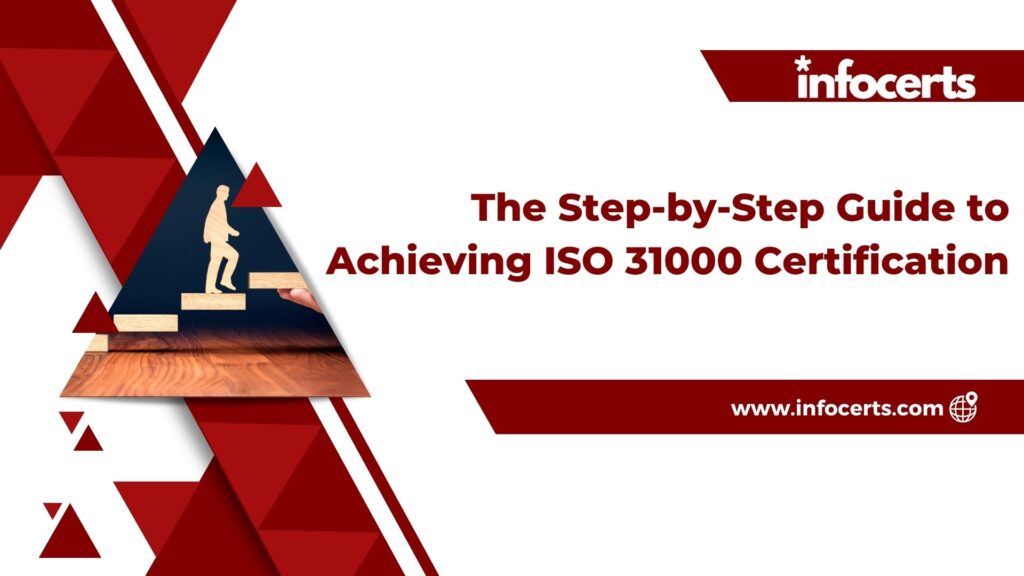Achieving ISO 31000 certification can significantly enhance your organization’s risk management capabilities. This guide breaks down the process into manageable steps, ensuring clarity and approachability for all businesses.
Understanding the ISO 31000 Standard
ISO 31000 is an international standard for risk management that provides principles and guidelines to help organizations manage risk effectively. Understanding the framework is crucial for successful implementation and certification.
Key Principles:
- Integrated
- Structured and comprehensive
- Customized
- Inclusive
- Dynamic
- Best available information
- Human and cultural factors
- Continuous improvement
ISO 31000 Framework:
- Mandate and Commitment: Establishing top management support.
- Design of Framework: Customizing the risk management approach to the organization.
- Implementing Risk Management: Applying the framework in practice.
- Monitoring and Review: Continuously improving the risk management processes.
- Continuous Improvement: Ensuring the framework evolves with the organization.
Preparing for Certification: Initial Steps
Preparation is key to a smooth certification process. Here’s what you need to do first:
- Gap Analysis: Identify existing processes and compare them with ISO 31000 requirements.
- Management Support: Secure commitment from senior leadership.
- Resource Allocation: Ensure you have the necessary resources, including personnel and budget.
- Training: Provide comprehensive training for your team on ISO 31000 principles. For more details, enroll in our ISO 31000 course.
Implementation Process: Key Activities and Milestones
Implementing ISO 31000 involves several critical activities and milestones. Here’s a step-by-step approach:
- Establish a Risk Management Policy: Define your organization’s risk management policy.
- Develop a Risk Management Plan: Outline the processes, procedures, and responsibilities.
- Risk Identification: Identify potential risks using various techniques such as brainstorming, checklists, and SWOT analysis.
- Risk Analysis: Assess the likelihood and impact of identified risks.
- Risk Evaluation: Prioritize risks based on their significance.
- Risk Treatment: Determine how to address each risk – whether to avoid, mitigate, transfer, or accept it.
- Communication and Consultation: Ensure effective communication with stakeholders.
- Monitoring and Review: Regularly monitor risks and review the effectiveness of your risk management plan.
The Certification Audit: What to Expect
The certification audit is a thorough examination of your risk management processes. Here’s what to expect:
- Pre-Audit Assessment: Conduct an internal audit to identify and rectify any gaps.
- Stage 1 Audit: The auditor will review your documentation and readiness.
- Stage 2 Audit: The auditor will evaluate the implementation of your risk management system.
- Audit Report: Receive the audit report detailing any non-conformities and areas for improvement.
- Certification Decision: If compliant, your organization will receive the ISO 31000 certification.
Post-Certification: Maintaining and Improving Your Risk Management System
Certification is not the end; it’s the beginning of a continuous improvement journey. Here’s how to maintain and enhance your risk management system:
- Regular Audits: Schedule periodic internal and external audits.
- Ongoing Training: Keep your team updated with the latest risk management practices. Enroll in our ISO 31000 course for continuous learning.
- Update Risk Registers: Regularly review and update your risk registers.
- Continuous Improvement: Encourage a culture of continuous improvement and feedback.
Achieving ISO 31000 certification is a significant milestone for any organization. It not only demonstrates your commitment to effective risk management but also enhances your reputation and operational efficiency.
For IT professionals seeking to enroll in an ISO 31000 course, contact infocerts at +91 70455 40400. Our comprehensive training will equip you with the knowledge and skills needed to implement ISO 31000 successfully.
By following this guide, your organization can confidently navigate the path to ISO 31000 certification, ensuring a robust and effective risk management framework.
Table: Key Steps to ISO 31000 Certification
| Step | Description |
|---|---|
| Gap Analysis | Identify gaps between current processes and ISO 31000 |
| Management Support | Secure leadership commitment |
| Resource Allocation | Ensure necessary resources |
| Training | Provide comprehensive ISO 31000 training |
| Risk Management Policy | Define policy and objectives |
| Risk Management Plan | Develop detailed plan |
| Risk Identification | Identify potential risks |
| Risk Analysis | Assess likelihood and impact |
| Risk Evaluation | Prioritize risks |
| Risk Treatment | Determine risk responses |
| Communication & Consultation | Engage stakeholders |
| Monitoring & Review | Regularly monitor and improve processes |
| Certification Audit | Undergo pre-audit, stage 1, and stage 2 audits |
| Post-Certification | Maintain and improve the system |
By adhering to these structured steps, your organization can achieve ISO 31000 certification smoothly and efficiently.

